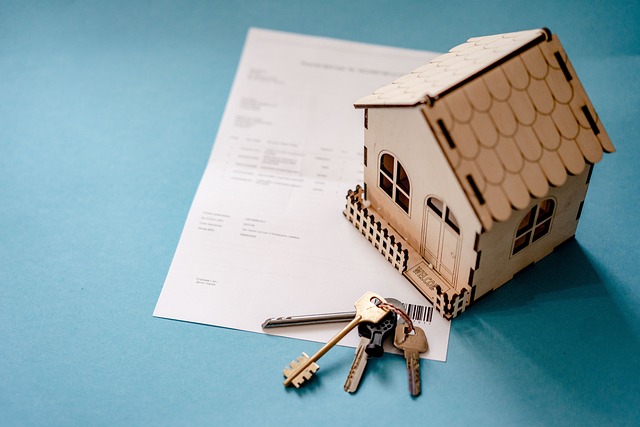Buying a second property in Singapore requires careful consideration of various financial and legal factors due to its regulated real estate market. Prospective investors must familiarize themselves with the Total Debt Servicing Ratio (TDSR), which limits monthly debt repayments to 60% of income, and other regulations like the Mortgage Servicing Ratio (MSR) and Loan-to-Value (LTV) ratios. Additionally, the Additional Buyer's Stamp Duty (ABSD) imposes higher taxes on subsequent property purchases. Legal due diligence is also necessary, including understanding Singapore's land tenure types, property rights, and foreign ownership laws. Tax implications, especially for non-residents under the Annual Tax on Immovable Property, must be considered to ensure compliance. Utilizing real estate investment software and government resources provides valuable data for informed decision-making. By aligning these factors with individual investment goals, investors can strategically navigate the complexities of Singapore's property market and make prudent choices for their second property investments.
Investing in a second property in Singapore’s dynamic real estate market can be a strategic move for diversifying one’s portfolio and maximizing returns. This article delves into the essential tools and methodologies that will empower investors to make informed decisions when acquiring additional properties. From understanding the key financial and legal considerations to leveraging data-driven analysis, the insights provided here will guide you through the complexities of the Singapore property landscape. Whether you’re an experienced investor or new to the scene, this comprehensive guide is tailored to help you analyze the potential of buying a second property in Singapore effectively.
- Maximizing Your Real Estate Portfolio: A Comprehensive Guide to Analyzing Buying a Second Property in Singapore
- Key Financial and Legal Considerations When Acquiring a Second Home in Singapore's Property Market
Maximizing Your Real Estate Portfolio: A Comprehensive Guide to Analyzing Buying a Second Property in Singapore

When considering the acquisition of a second property in Singapore, investors must navigate the complex interplay of market trends, regulatory frameworks, and personal financial strategies to maximize their real estate portfolio. Prospective buyers should first familiarize themselves with the Total Debt Servicing Ratio (TDSR) and Mortgage Servicing Ratio (MSR), which are critical in assessing affordability and ensuring compliance with Singapore’s loan-to-value requirements. Utilizing robust financial analysis tools, such as real estate investment software or online calculators, can provide insights into the potential cash flow, return on investment, and long-term equity growth associated with a second property. These tools often integrate up-to-date market data, allowing for real-time analysis of property values, rental yields, and capital appreciation trends in Singapore’s dynamic real estate landscape.
Investors must also consider the diverse range of property types available in Singapore, including condominiums, landed properties, and executive condominiums, each with unique characteristics and investment potentials. A thorough examination of historical and current market performance data is essential to identify high-growth areas within the city-state. Additionally, staying abreast of government policies, such as the Additional Buyer’s Stamp Duty (ABSD), can influence purchasing decisions and investment outcomes. By combining quantitative analysis with qualitative insights on property types, investors can make informed decisions that align with their financial goals and contribute to the strategic expansion of their real estate portfolio in Singapore.

When considering the acquisition of a second property in Singapore, investors are presented with a unique and potentially rewarding opportunity within the city-state’s real estate market. The decision to purchase an additional property is influenced by various factors including market trends, investment strategies, and personal financial considerations. To navigate this landscape effectively, investors should leverage specialized tools and platforms that provide comprehensive data on property values, rental yields, and market sentiment. These analytics tools, such as PropertyGuru and 99.co, offer users detailed insights into the property market, enabling informed decision-making. Additionally, government resources like the Singapore Land Authority (SLA) and the Urban Redevelopment Authority (URA) are invaluable for understanding zoning regulations, land use planning, and property taxation.
Furthermore, financial analysis tools play a critical role in evaluating the viability of a second property investment. Tools like MoneySmart and iProperty provide calculators that help compute potential rental income, capital appreciation over time, and the total cost of ownership including financing costs, taxes, and maintenance fees. These resources empower investors to assess the long-term profitability of their investments and ensure alignment with their financial goals. For those looking to buy a second property in Singapore, it is imperative to conduct thorough research and utilize these robust analytical tools to navigate the complexities of the real estate market and make a well-informed investment decision.
Key Financial and Legal Considerations When Acquiring a Second Home in Singapore's Property Market

When considering the acquisition of a second property in Singapore, prospective buyers must navigate a complex array of financial and legal considerations to ensure a sound investment. From understanding the Total Debt Servicing Ratio (TDSR) framework to assessing the long-term value appreciation potential, financial prudence is paramount. The TDSR dictates that an individual’s total monthly debt repayment obligation should not exceed 60% of their stable monthly income. This ratio safeguards against over-leveraging and helps maintain a healthy balance in the personal finances of property owners. Additionally, potential buyers must be cognizant of the Additional Buyer’s Stamp Duty (ABSD) and the Loan-to-Value (LTV) limits, which impose additional costs and restrictions on subsequent property purchases. These measures are designed to temper demand and prevent speculative buying in Singapore’s property market.
Legally, the process of acquiring a second property involves a detailed understanding of land tenure types, property rights, and the legal framework governing foreign ownership. It is imperative to engage with experienced real estate lawyers who can provide guidance on the relevant laws, including the Land Acquisition (Amendment) Act and the Strata Titles Boards Act. These legal experts can assist in ensuring compliance with all regulations and facilitate a smooth transaction. Furthermore, potential buyers should consider the tax implications, such as the Annual Tax on Immovable Property for foreigners, to avoid any future financial complications. By meticulously evaluating these key financial and legal factors, investors can make informed decisions that align with their investment goals when buying a second property in Singapore’s dynamic real estate market.
When considering the purchase of a second property in Singapore, prudent investors recognize the importance of leveraging robust analytical tools and strategies. This guide has outlined critical financial and legal factors to consider, ensuring a well-informed decision that aligns with your investment goals. By utilizing the right resources and staying abreast of market trends, investors can effectively expand their real estate portfolio within Singapore’s dynamic property landscape. Remember, each investor’s journey is unique; thus, it’s crucial to tailor your approach based on your individual circumstances and objectives when buying a second property in Singapore.
